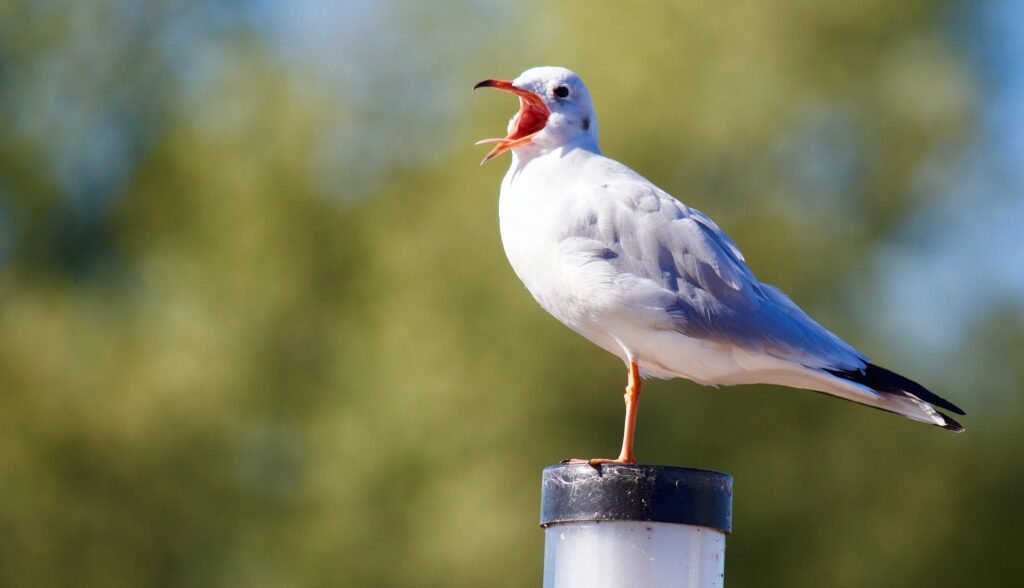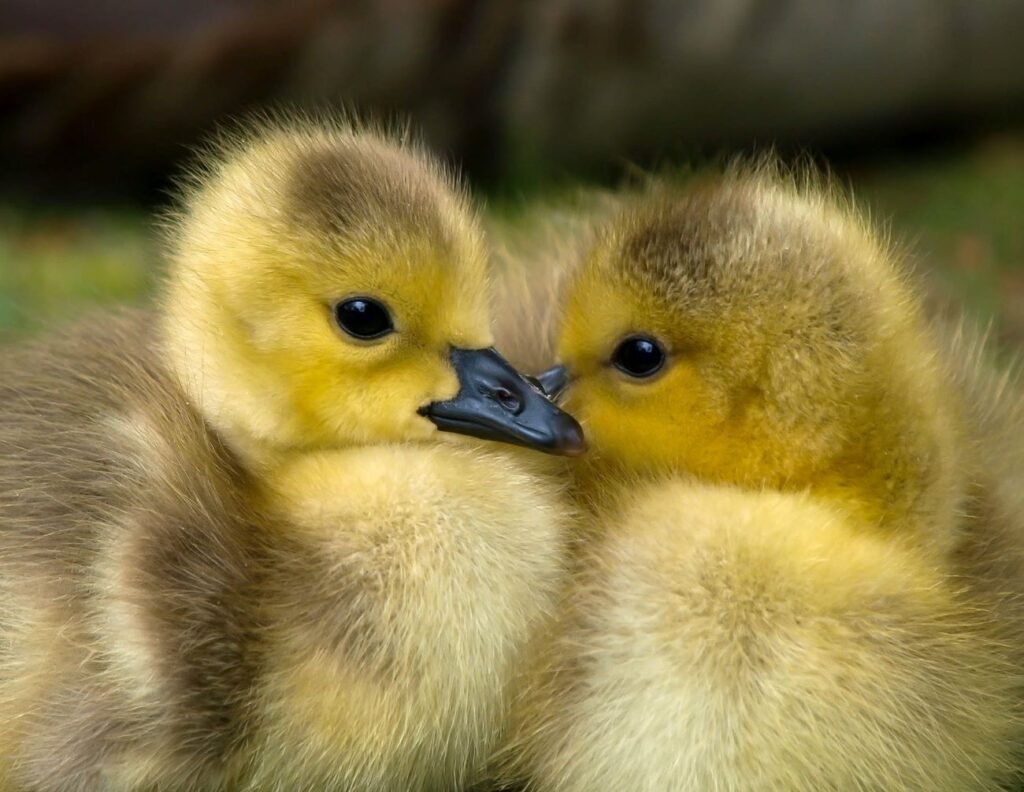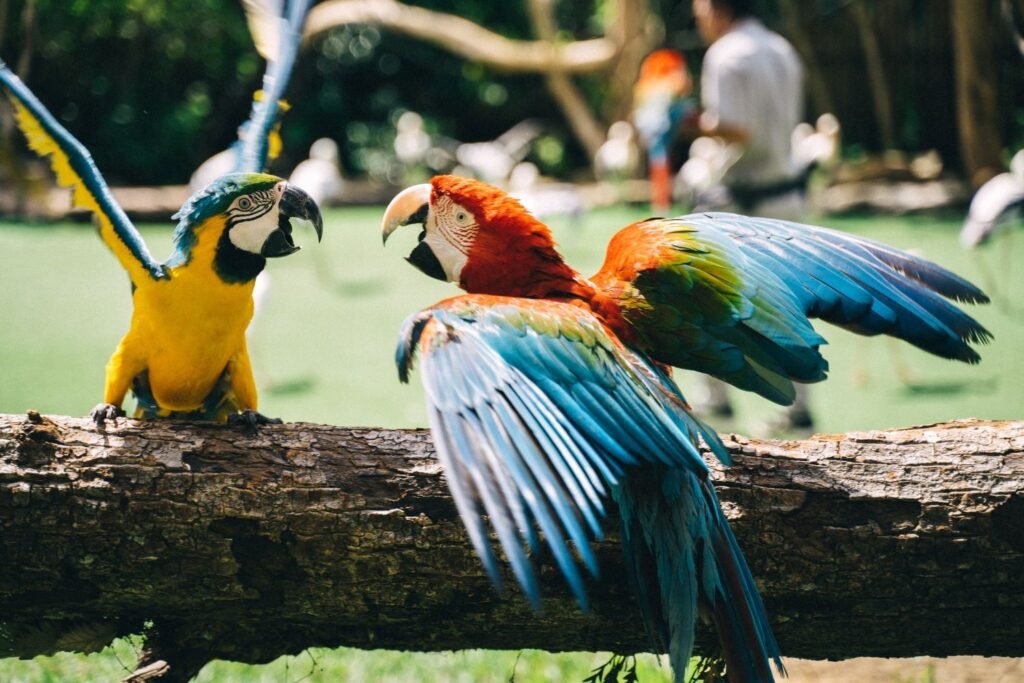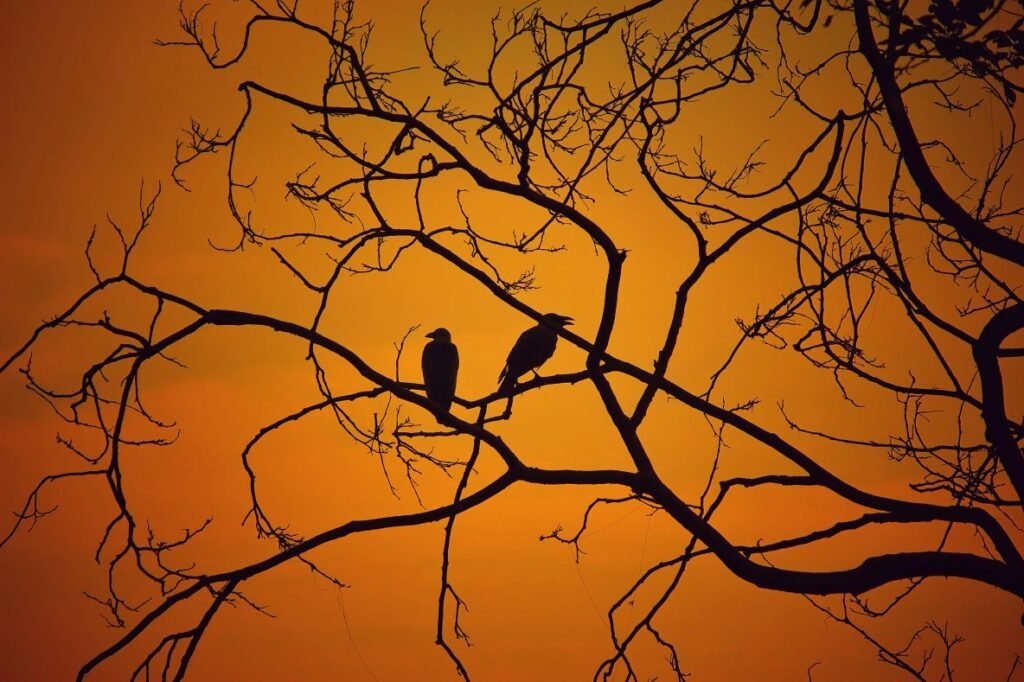Birds are not just feathered creatures that fly in the sky. They are also intelligent, social, and emotional beings that have complex lives and behaviors.
Birds communicate with each other using sounds, gestures, and colors. They cooperate to find food, raise the young, and defend their territory. They also compete with each other for mates, resources, and status. In this article, we will uncover some of the secrets of the bird world, and show you how birds interact with each other and their environment.

The language and signals of birds.
Birds have a rich and diverse language that consists of various sounds and signals.
Some of the sounds that birds make are:
– Songs: These are long and complex vocalizations that are used mainly for attracting mates and defending territories. Songs are usually performed by males, but some females also sing. Songs vary among species, populations, and individuals, and can be learned or inherited. Some examples of birds that sing are **songbirds**, such as robins, sparrows, and warblers, and **parrots**, such as macaws, cockatoos, and budgies.
– Calls: These are short and simple vocalizations that are used mainly for conveying information and maintaining contact. Calls can be made by both males and females and are often innate or instinctive. Some examples of birds that call are **waterfowl**, such as ducks, geese, and swans, and **raptors**, such as eagles, hawks, and owls.
– Mimicry: This is the ability to imitate the sounds of other birds or animals, or even human speech. Mimicry can be used for various purposes, such as deception, camouflage, or entertainment. Some examples of birds that mimic are **mockingbirds**, such as the northern mockingbird, the European starling, and the lyrebird, and **corvids**, such as the raven, the crow, and the magpie.
A few of the signals that birds use are:
– Gestures: These are movements or postures that are used to express emotions or intentions. Gestures can be made with the head, wings, tail, or feet. Some examples of gestures are **head bobbing**, which is used to show interest or excitement, **wing spreading**, which is used to show aggression or dominance, and **tail wagging**, which is used to show happiness or relaxation.
– Colors: These are patterns or hues that are used to attract attention or convey messages. Colors can be found on the feathers, eyes, beak, or legs. Some examples of colors are **red**, which is used to signal danger or readiness, **yellow**, which is used to signal health or vitality, and **blue**, which is used to signal calmness or trust.

The cooperation and altruism of birds.
They cooperate for mutual benefit and survival.
Some of the ways that birds cooperate are:
– Foraging: This is the act of searching for food. Birds can cooperate by sharing information, such as the location or quality of food sources, or by working together, such as hunting in groups or mobbing predators. Some examples of birds that cooperate in foraging are **pelicans**, which fish in coordinated formations, **woodpeckers**, which drum to alert each other of food availability, and **chickadees**, which form mixed-species flocks to increase their chances of finding food.
– Breeding: This is the act of reproducing and raising offspring. Birds can cooperate by mating monogamously, such as forming lifelong pairs or bonds, or by mating polygamously, such as having multiple partners or helpers. Some examples of birds that cooperate in breeding are **swans**, which mate for life and raise their cygnets together, **flamingos**, which mate in large colonies and synchronize their egg-laying and hatching, and **hornbills**, which seal their nests with mud and rely on their mates to feed them and their chicks.
– Learning: This is the act of acquiring new skills or knowledge. Birds can cooperate by teaching or learning from each other, such as by demonstrating or imitating behaviors, or by passing on traditions or cultures. Some examples of birds that cooperate in learning are **parrots**, which teach each other how to use tools or solve problems, **crows**, which learn from each other how to drop nuts on roads to crack them open, and **sparrows**, which learn from each other how to sing new songs or dialects.
Our feathered friends also show altruism, which is the act of helping others without expecting anything in return.
Several of the ways that birds show altruism are:
– Sharing: This is the act of giving or receiving resources or services. Birds can share by offering food, such as regurgitating or dropping food items, or by providing protection, such as guarding or babysitting. Some examples of birds that share are **pigeons**, which feed their mates and offspring with crop milk, **vultures**, which scavenge in groups and share carcasses, and **fairy-wrens**, which help raise the young of other birds of the same species.
– Consoling: This is the act of comforting or supporting others who are in distress or pain. Birds can console each other by grooming, cuddling, or vocalizing. Some examples of birds that console each other are **parrots**, which preen and cuddle their mates or flock members, **geese**, which honk and nuzzle their injured or dead partners, and **ravens**, which comfort each other with gentle pecks or calls.

The competition and conflict of birds.
Sometimes the birds compete with each other for limited resources and opportunities.
The ways that birds compete are:
– Fighting: This is the act of physically attacking or defending oneself or others. Birds can fight with each other by using their beaks, claws, wings, or feet. Some examples of birds that fight are **ostriches**, which kick and peck their rivals, **hummingbirds**, which stab and chase their competitors, and **cassowaries**, which slash and charge their enemies.
– Displaying: This is the act of showing off or intimidating others. Birds can display to each other by using their feathers, crests, tails, or wattles. Some examples of birds that display are **peacocks**, which fan and shake their tails to impress females, **woodpeckers**, which drum and flick their crests to signal dominance, and **turkeys**, which puff and strut their wattles to scare off intruders.
– Cheating: This is the act of deceiving or exploiting others. Birds can cheat on each other by mimicking, stealing, or parasitizing. Some examples of birds that cheat are **cuckoos**, which lay their eggs in the nests of other birds and trick them into raising their young, **frigatebirds**, which harass and rob other seabirds of their fish, and **mockingbirds**, which imitate the songs of other birds to lure them away from their territories or mates.
The birds also experience conflict, which is the state of disagreement or opposition between individuals or groups.
A few of the causes and consequences of conflict are:
– Mating: This is the process of finding and choosing a partner for reproduction. Birds can experience conflict over mating due to sexual selection, which is the preference for certain traits or behaviors that increase the chances of successful mating. Some examples of conflict over mating are **ducks**, which have elaborate courtship displays and forced copulations, **bowerbirds**, which have elaborate nest decorations and mate stealing, and **flamingos**, which have elaborate group dances and mate switching.
– Parenting: This is the process of caring for and raising offspring. Birds can experience conflict over parenting due to parental investment, which is the amount of time and energy devoted to offspring. Some examples of conflict over parenting are **penguins**, which have long and harsh incubation and feeding periods and mate fidelity, **albatrosses**, which have long and distant foraging trips and mate infidelity, and **eagles**, which have sibling rivalry and siblicide.
– Socializing: This is the process of interacting and forming relationships with others. Birds can experience conflict over socializing due to social structure, which is the organization and hierarchy of individuals or groups. Some examples of conflict over socializing are **chickens**, which have pecking orders and bullying, **parrots**, which have flocks and friendships, and **crows**, which have clans and vendettas.
Conclusion:
Our feathered friends are more than just flying animals. They are also living beings that have feelings, thoughts, and personalities. By observing and studying the communication, cooperation, and competition of birds, we can learn more about their secret lives and behaviors. We can also learn more about ourselves, as we share many similarities and differences with them. Birds are not only fascinating and beautiful but also valuable and important for our planet.
If you enjoyed this article and love birds like we do, you might want to check out our store with bird-themed items. We have various products, such as mugs, t-shirts, posters, and more, that feature beautiful and original designs of your favorite birds. Whether you are looking for a gift for yourself or a fellow birder, you will find something that suits your taste and budget. Visit our store today and show your support for the birds!

